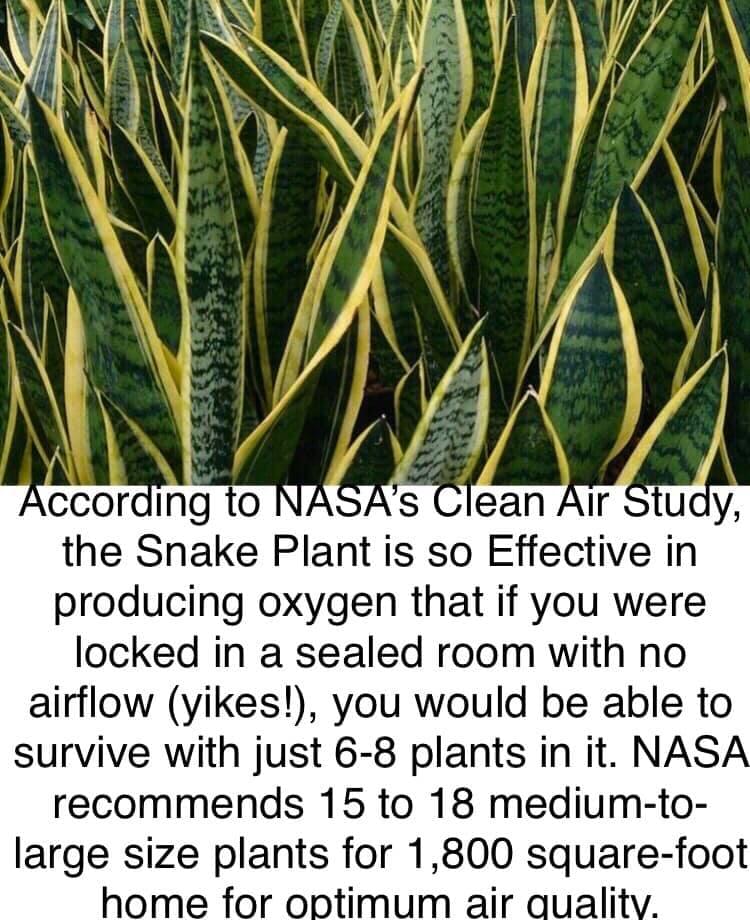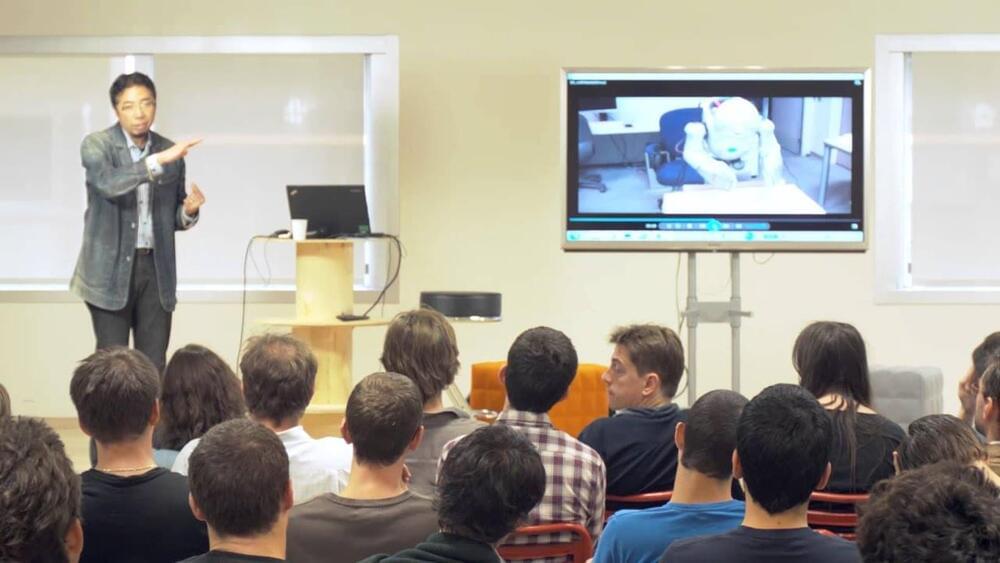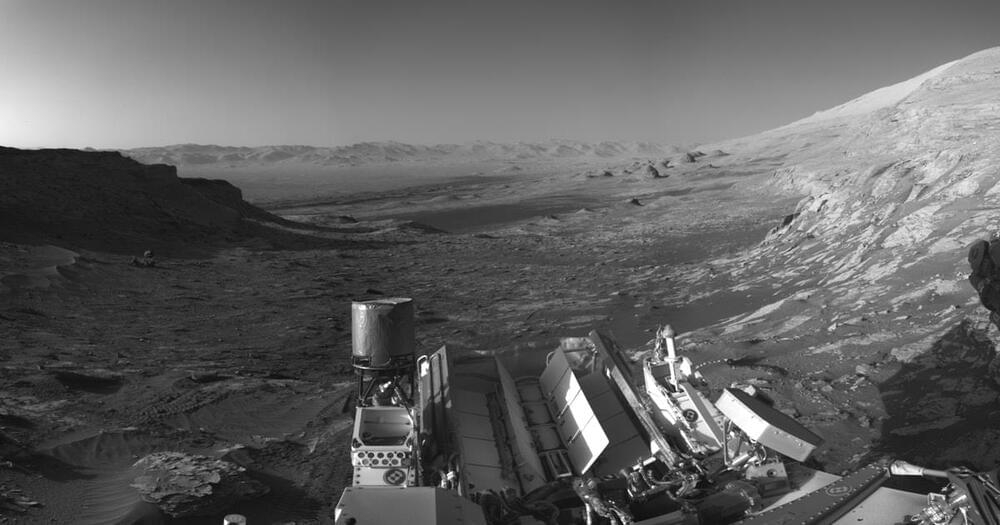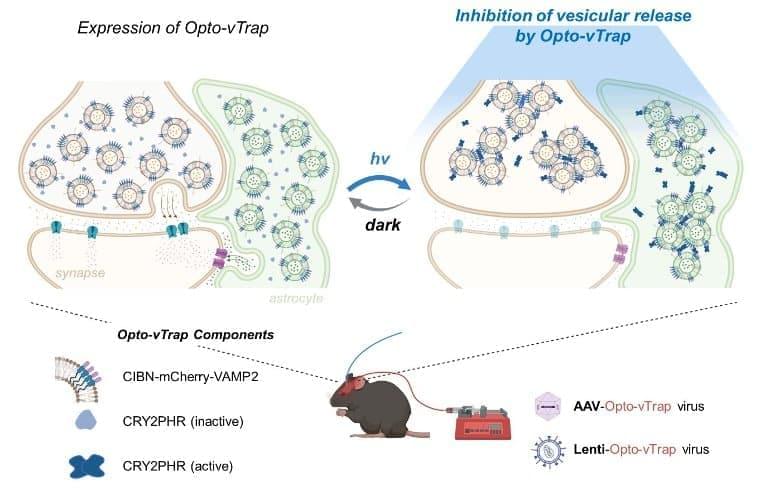We love the sort of outlandish concept cars that treat themselves as high art, and regret that COVID-19 and the general death of the big auto show is increasingly denying us this pleasure. But here is a spectacular example of the genre to lift the late holiday weekend malaise: meet the WayRay Holograktor.
The current talk addresses a crucial problem on how compositionality can be naturally developed in cognitive agents by having iterative sensory-motor interactions with the environment.
The talk highlights a dynamic neural network model, so-called the multiple timescales recurrent neural network (MTRNN) model, which has been applied to a set of experiments on developmental learning of compositional actions performed by a humanoid robot made by Sony. The experimental results showed that a set of reusable behavior primitives were developed in the lower level network that is characterized by its fast timescale dynamics while sequential combinations of these primitives were learned in the higher level, which is characterized by its slow timescale dynamics.
This result suggests that adequate functional hierarchy necessary of generating compositional actions can be developed by utilizing timescale differences imposed at different levels of the network. The talk will also introduce our recent results on applications of an extended model of MTRNN to the problem of learning to recognize dynamic visual patterns on a pixel level. The experimental results indicated that dynamic visual images of compositional human actions can be recognized by self-organizing functional hierarchy when both spatial and temporal constraints are adequately imposed on the network activity. The dynamical systems’ mechanisms for development of the higher-order cognition will be discussed upon reviewing the aforementioned research results.
Jun Tani — Professor, Department of Electrical Engineering, KAIST
Prof. Jun Tani received his doctorate degree in electrical engineering from Sophia University in 1995. He worked at Sony Computer Science Lab in Tokyo as a researcher for 8 years and then started his lab as a PI in Riken Brain Science Inst. 12 years ago. He was appointed a visiting associate professor at the Univ. of Tokyo and a visiting researcher in Sony Intelligent Dynamic Lab. He moved to KAIST as a full professor in May, 2012.
He has been interested in neuro-robotics, theoretical problems in cognitive neuroscience, and complex systems. He has authored around 70 journal papers and 90 conference papers. He has been invited for his plenary talks in various international conferences including IEEE ICRA in 2005 and ICANN in 2014. He has served on editorial boards in IEEE Trans. Autonomous Mental Development, Adaptive Behavior, and Frontier in Neurorobotics.
Serious Science — http://serious-science.org.
Neuroscientist Karl Friston on functional specialization of different brain areas, brain hierarchy, and the connectome.
The two billionaires are locked in a race to send humans to space, with Musk’s SpaceX far in front of Bezos’ Blue Origin venture. But the two differ on what to do when humanity arrives in space: Musk wants to establish a self-sustaining city on Mars, while Bezos would rather see humans orbiting Earth in giant space stations.
Musk’s vision receives a lot of publicity, but space consultant Rand Simberg tells Inverse that Bezos’ goal is the “more expansive.”
“Elon is what [science fiction writer Isaac] Asimov would have called a planetary chauvinist,” he says. “He thinks people need to be on planets. He wants to be a multi-planet species. That’s nice, I guess. But Bezos actually has a more expansive vision.”
The Curiosity rover captured a scenic view of Mars’ mountains during its ongoing mission on the Red Planet to find signs of ancient alien life.
Nov 30 (Reuters) — Amazon.com Inc’s (AMZN.O) cloud computing unit on Tuesday introduced two new custom computing chips aimed at helping its customers beat the cost of using chips from Intel Corp (INTC.O) and Nvidia Corp (NVDA.O).
With $45.37 billion in sales in 2020, Amazon Web Services (AWS) is the world’s biggest cloud computing provider and one of the biggest buyers of data center chips, whose computing power AWS rents out to its customers. Ever since buying a startup called Annapurna Labs in 2015, AWS has worked to develop its own custom chips.
On Tuesday, the company released the third generation of its Graviton chip that is designed to compete with central processors from Intel and Advanced Micro Devices (AMD.O). The Graviton3 is 25% faster than its predecessor, and Dave Brown, vice president of Elastic Compute Cloud at Amazon, told Reuters that the company expects it to provide a better performance per dollar than Intel’s chips.
Summary: A newly developed system dubbed Opto-vTrap can temporarily trap vesicles from being released from brain cells.
Source: Institute for Basic Science.
Controlling signal transmission and reception within the brain circuits is necessary for neuroscientists to achieve a better understanding of the brain’s functions. Communication among neuron and glial cells is mediated by various neurotransmitters being released from the vesicles through exocytosis. Thus, regulating vesicular exocytosis can be a possible strategy to control and understand brain circuits.
The Metaverse Group describes itself as “the world’s first virtual real estate company”.
Decentraland space will be used to host virtual fashion shows for avatars.
Our hunter-gatherer ancestors are huddled around a campfire when they suddenly hear the nearby bushes rustling. They have two options: investigate if the movement was caused by small prey such as a rabbit, or flee, assuming there was a predator such as a saber-tooth tiger. The former could lead to a nutritious meal, while the latter could ensure survival. What call do you think our ancestors would have made?
Evolution ensured the survival of those who fled the scene on the margin of safety rather than those who made the best decision by analyzing all possible scenarios. For thousands of years, humans have made snap decisions in fight-or-flight situations. In many ways, the human race learned to survive by jumping to conclusions.
“In modern context, such survival heuristics become myriad cognitive biases,” said Eric Colson, Chief Algorithms Officer at Stitch Fix. Let’s look at the most common biases or shortcut decisions that influence organizational leaders and how decision intelligence can come to their rescue.









